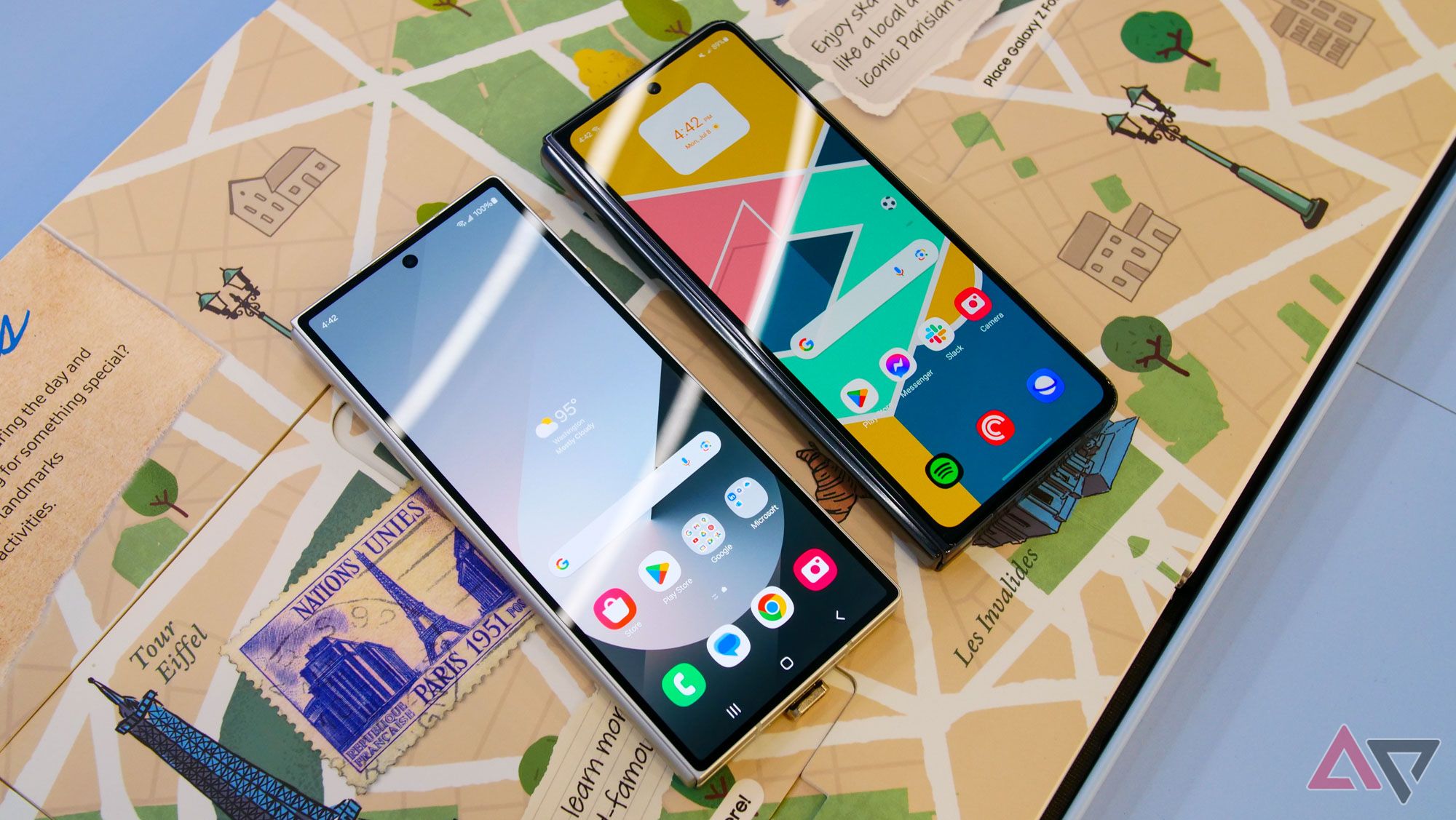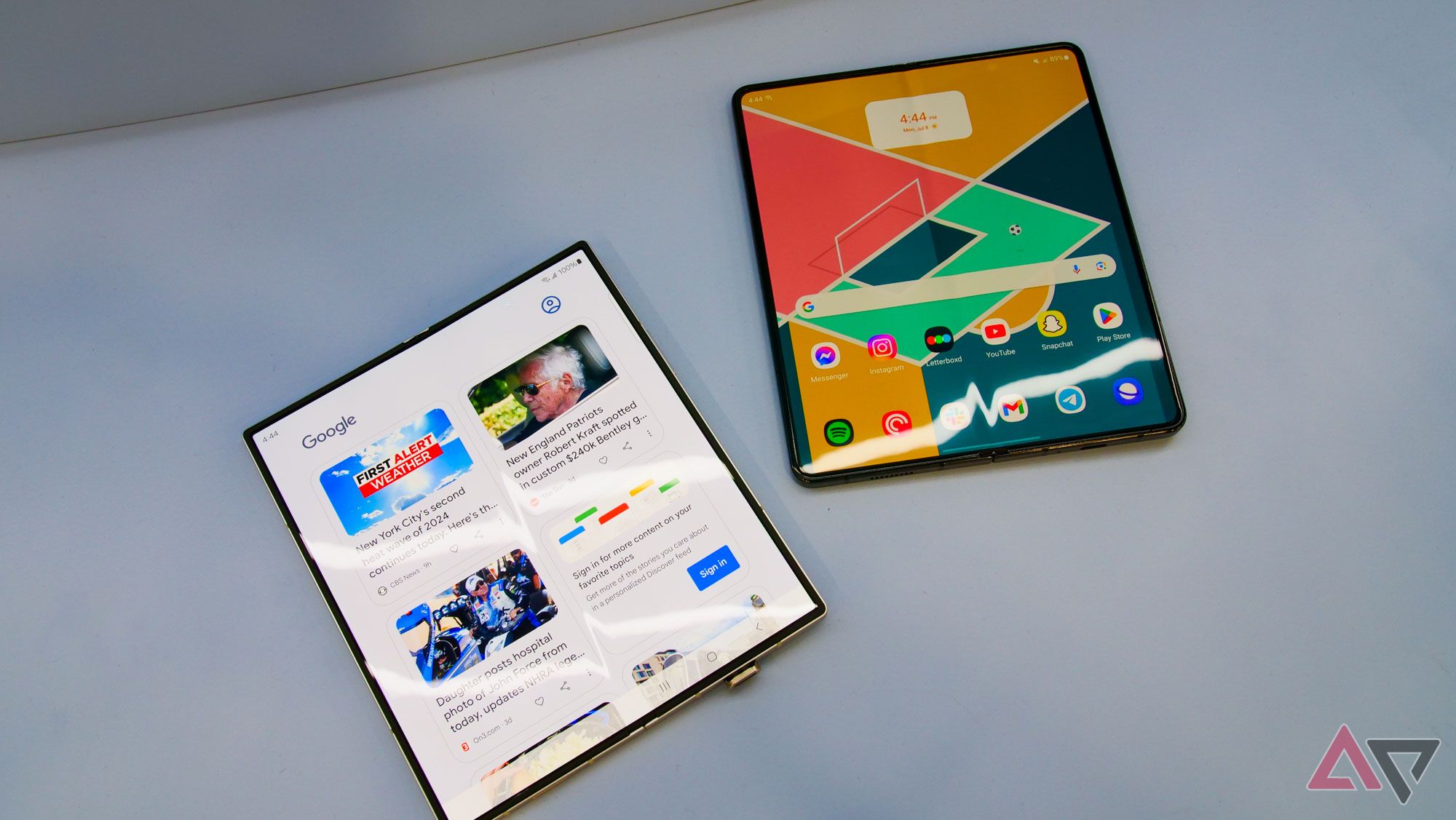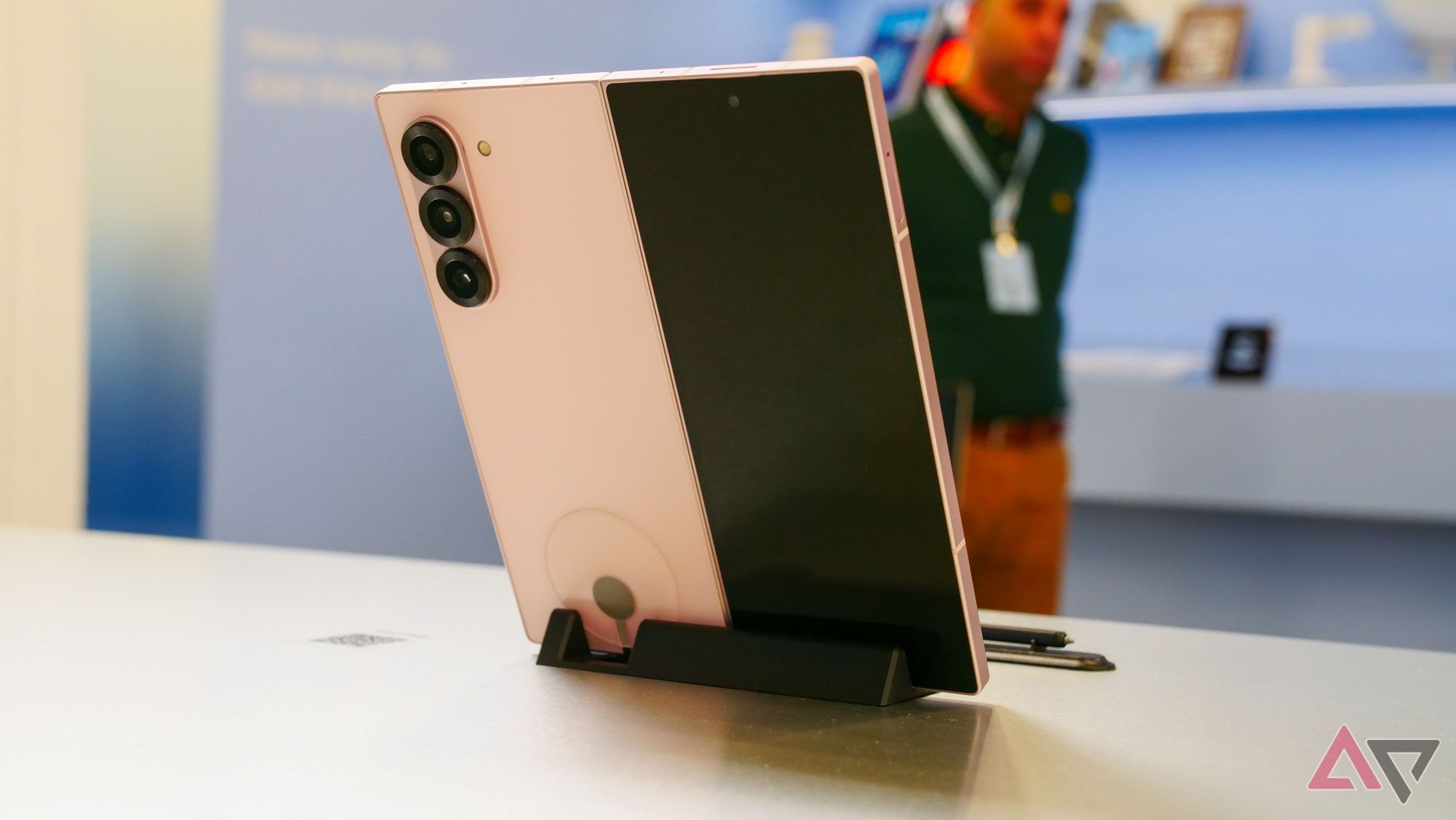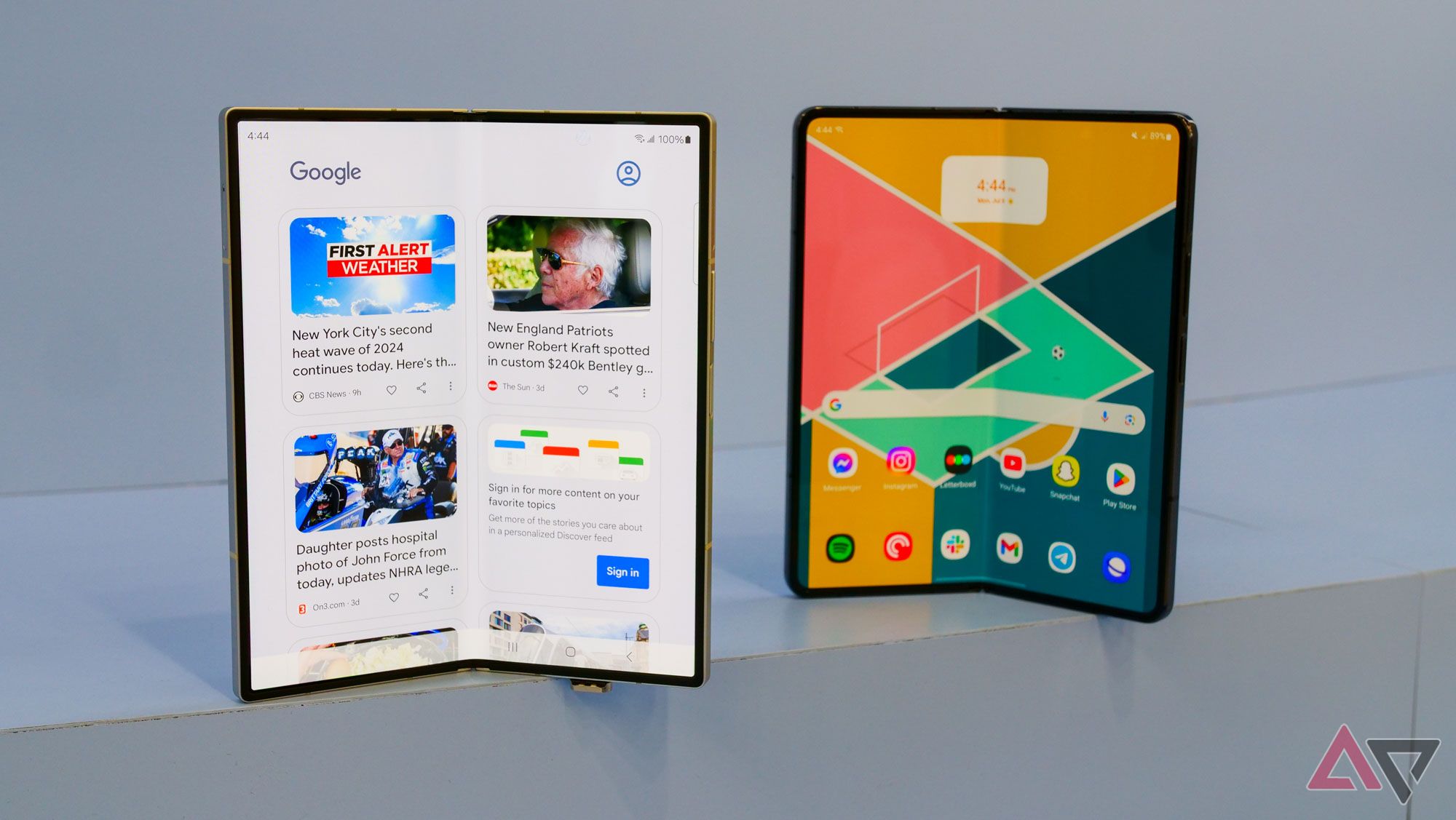It’s no secret Samsung’s lineup of smartphones has faced some serious stagnation over the past few years. It’s an easy problem to ignore when you’re only upgrading every 36 months — you know, how normal people operate — but if you’re an enthusiast, these small year-over-year changes can make events like Unpacked feel pretty disappointing. While Samsung’s sixth generation of foldables certainly doesn’t solve this problem entirely, the Galaxy Z Fold 6 at least feels like an attempt to catch up with an increasingly large amount of competition.
After two back-to-back releases with minimal upgrades, the Galaxy Z Fold 6 represents the first big shake-up to this lineup since the Z Fold 3. That’s not to say it’s entirely unrecognizable as a Samsung foldable — no one’s going to mistake this for the OnePlus Open or the Pixel Fold. But after years of ultra-tall, ultra-narrow screens, it seems like the Fold 6 offers a concession for those One UI fans jealously staring at the outer panels of the competition. Whether it’s enough to escape that feeling of disappointment, however, might depend on your expectations.
Samsung’s cover display finally gets wider
But is it enough of a change to matter?
As you might expect from a new foldable, this year’s device is all about the displays. Although the cover screen remains taller than your average smartphone, its 22.1:9 aspect ratio should feel more comfortable to type on than the Fold 5’s 23.1:9 aspect ratio. We’re talking about differences in millimeters, though — this isn’t nearly as wide as what you’ll find on the OnePlus Open, which, for my money, still delivers the best foldable experience available in the US.
The company is trying to split the difference between making two-handed typing more comfortable without losing the ability for one-handed typists to quickly shoot off a message. It’s a tricky balance to try and walk, and I’ll have to really dig into my own review unit to find out if this new aspect ratio actually qualifies as a large enough change to tempt Z Fold 4 or Z Fold 5 owners to upgrade. In my earliest of impressions, I’m not so sure if it’s quite there yet. Stay tuned.
Samsung did take some additional design influence from OnePlus this year, bringing the weight down to 239 grams and measuring in at 12.1mm thick when closed. It makes for a thinner, lighter design that is immediately noticeable if you’ve used older Z Fold models for any length of time, but I’d argue Samsung didn’t go far enough here. In fact, even without factoring in models from Chinese OEMs like Honor’s 10.1mm Magic V2, Samsung still loses out on its bulkiness compared to the nearly one-year-old Open’s 11.7mm chassis.
It’s not the only note the Galaxy Z Fold 6 failed to take from its rivals — or, honestly, from Samsung itself. I praised the matte finish and minimal bend on the Open’s internal screen last year, and although the Fold 6 does sport a much less visible crease, it retains a glossy finish that’s more reflective than standard smartphones. A matte screen protector might sound like a small change, but it makes a huge difference in everyday use, specifically outdoors.
It’s not a dealbreaker, but I’m less inclined to forgive Samsung for leaving Gorilla Armor off the front cover display. If you’ve used a Galaxy S24 Ultra, you know just how nice Corning’s latest material is. It’s not just extra durable — it’s also far less reflective than other glass panels, making for a really excellent experience in bright sunlight or underneath harsh overhead lighting. So, naturally, you won’t find it on the front of this year’s Galaxy Z Fold 6. Instead, this $1,900 foldable sports a perfectly adequate Gorilla Glass Victus 2 shield instead.
Samsung told me the reasoning behind this omission comes down to a choice to focus on the internal screen this year, but frankly, that’s just… objectively untrue. The big change this year is the new cover display, and I think the inclusion of the same materials used on the S24 Ultra could’ve made for an even better reason for older Fold owners to upgrade. Instead, it’ll undoubtedly be a big change for next year’s device — or maybe the year after that.
The Galaxy Z Fold series is innovating at a snail’s pace
The same can’t be said for Samsung’s closest rivals
I write all of this not to suggest Samsung hasn’t built a very good foldable this year — I’m sure it has, and I’m excited to share more complete thoughts in a full review next week. Rather, I think this is a company that seems either overly confident in its market position or absolutely terrified at the idea of delivering too many changes in a single generation. Either way, the end result is a brand-new device that already feels behind the competition, both stateside and globally.
This extends to One UI’s changes as well, which are nearly all dedicated to building new tools into Galaxy AI that will eventually trickle down to older, non-foldable devices. I’m not necessarily against automated PDF translations or the hilariously goofy Sketch to Image tool that automatically generates hats, boats, and dinosaurs from a simple stick drawing. But these aren’t necessarily foldable-specific tricks, the sort of thing that makes a device worth dropping nearly $2,000 on, despite there being plenty of space to improve on, say, multitasking.
Put simply, I refuse to believe that Samsung’s team couldn’t integrate some of these (in my eyes) crucial changes to the Galaxy Z Fold 6 to deliver a better end-user experience. I also absolutely think Samsung’s engineering team is capable of continuing to shave fractions of millimeters off these devices to bring it more in line with devices from Honor. For whatever reason, though, we’re forced to sit through generation after generation of endless refinement, all while smaller, more competitive companies continue to deliver improvements at a much faster rate.
The Galaxy Z Fold 6 really looks like its Galaxy S24 Ultra cousin.
Fundamentally, all of the things you liked (or disliked) about previous Galaxy Z Fold models remain on this model. It’s thinner, lighter, boxier, and more expensive, but it’s still very much a half-step forward. Like most of Samsung’s previous foldables, I have no doubt this year’s model will prove to be an excellent device in daily use. But with so many of the hardware enhancements simply playing catch-up to other brands, and practically nothing outside of niche AI tools like Sketch to Image making up for it on the software side, it’s clear Samsung is continuing to march to the beat of its own very slow drum.
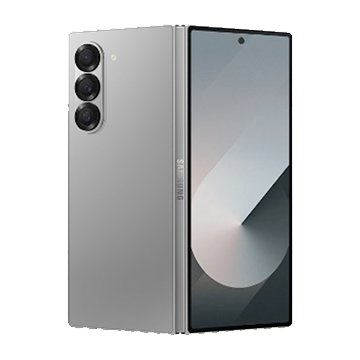
Samsung Galaxy Z Fold 6
Samsung’s latest foldable takes some cues from the Galaxy S24 Ultra, with a boxier design and an all-matte finish. It features a slightly wider cover display for a more comfortable typing experience, as well as new Galaxy AI features and an upgraded ultra-wide camera.
Source link

